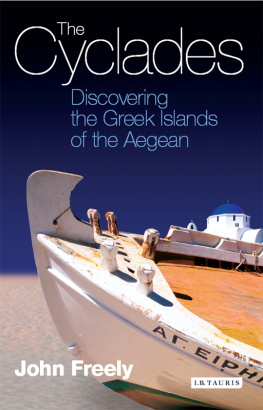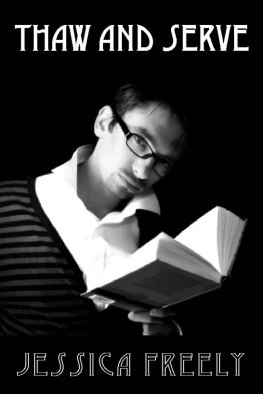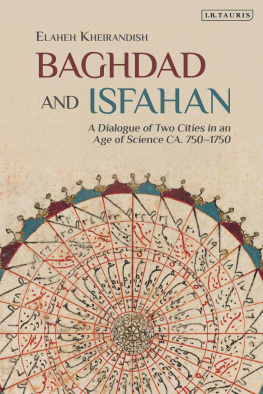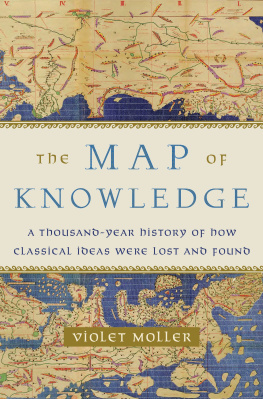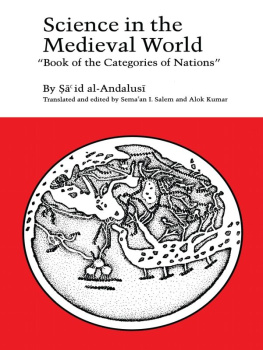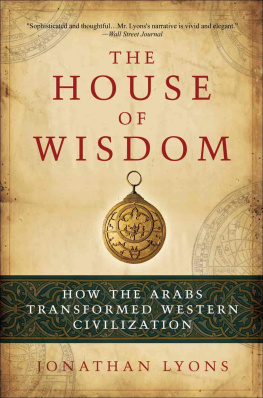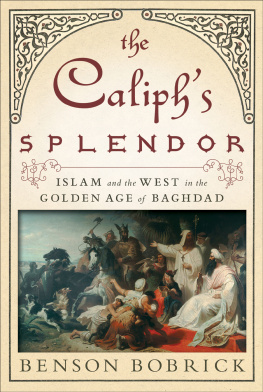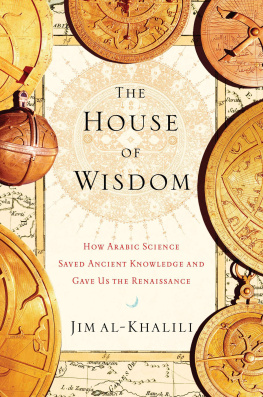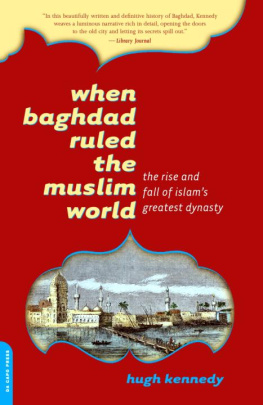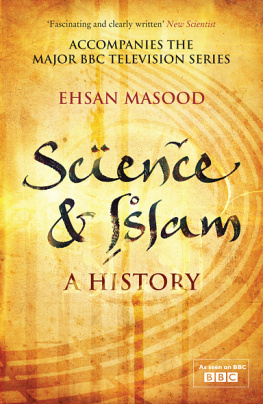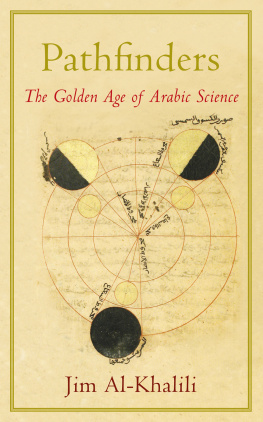John Freely was born in New York in 1926 and joined the US Navy at the age of seventeen, serving during the last two years of World War II. He has a PhD in physics from New York University and did post-doctoral studies in the history of science at Oxford. He is professor of physics at Bosphorus University in Istanbul, where he has taught physics and the history of science since 1960. He has also taught in New York, Boston, London and Athens. He has written more than forty books, including works in the history of science and travel. His most recent book in the history of science is Aladdins Lamp, How Greek Science Came to Europe Through the Islamic World (2009). His recent books on history and travel include The Grand Turk, Storm on Horseback, Children of Achilles, The Cyclades, The Ionian Islands (all I.B. Tauris), Crete, The Western Shores of Turkey, Strolling through Athens, Strolling through Venice and the bestselling Strolling through Istanbul (all Tauris Parke Paperbacks).
To Emin Saati, Memo and Anne Marie Sarolu

Published in 2011 by I.B.Tauris & Co Ltd
6 Salem Road, London W2 4BU
175 Fifth Avenue, New York NY 10010
www.ibtauris.com
Distributed in the United States and Canada Exclusively by
Palgrave Macmillan
175 Fifth Avenue, New York NY 10010
Copyright John Freely, 2011
The right of John Freely to be identified as the author of this work has been asserted by him in accordance with the Copyright, Designs and Patents Act 1988.
All rights reserved. Except for brief quotations in a review, this book, or any part thereof, may not be reproduced, stored in or introduced into a retrieval system, or transmitted, in any form or by any means, electronic, mechanical, photocopying, recording or otherwise, without the prior written permission of the publisher.
ISBN 978 1 84885 452 9
eISBN 978 0 85773 101 2
A full CIP record for this book is available from the British Library
A full CIP record is available from the Library of Congress
Library of Congress Catalog Card Number: available
Typeset in New Baskerville by Dexter Haven Associates Ltd
LIST OF PLATES
.
PROLOGUE
The Scriptorium at the Sleymaniye
The Sleymaniye mosque in Istanbul, built by the architect Sinan for Sultan Sleyman the Magnificent in the years 155056, is the most splendid of the Islamic monuments that adorn the former capital of the Ottoman Empire. The mosque is the centre of a vast complex of pious foundation that also includes half-a-dozen madrasas (Arabic), a hospital, an insane asylum, a refectory, a caravansarai, a primary school, a public bath, a market, and the tombs of Sleyman and his wife Roxelana. The Ottoman Turks reached their peak under Sleyman, who ruled from 1520 until 1566, his realm extending from the Danube to the Nile and from the western Mediterranean through the Middle East. Their sultanate endured until 1923, the last of the great Muslim empires that emerged with the rise of Islam in the seventh century.
Many of the institutions of the Sleymaniye complex have been restored, though only the public bath still serves its original function. The hospital is now a maternity clinic, the primary school houses a childrens library, the refectory has been converted into a restaurant specialising in Ottoman cuisine, and one of the madrasas is a library, whose scriptorium contains several thousand manuscripts, many of them works of medieval Islamic science.
Some years ago I spent a day at the scriptorium of the Sleymaniye examining medieval manuscripts of Islamic science with the curator, Muammer Bey. I looked at Arabic translations of ancient Greek classics in science and philosophy, including works of Aristotle, Archimedes, Euclid, Galen and Ptolemy, along with Islamic treatises in philosophy, physics, mathematics, astronomy, medicine, geography, astrology and alchemy, many of them illustrated with beautiful miniatures. Most of the texts dated from the ninth century to the twelfth, the golden age of Islamic science.
When Europe was shrouded in the relative darkness of the Middle Ages following the end of Graeco-Roman civilisation, Arabic astronomers were observing the heavens from observatories in Samarkand, Baghdad, Damascus, Cairo, Marrakech and Cordoba, where Islamic physicians, philosophers, physicists, mathematicians, geographers and alchemists were pursuing their researches, preserving and extending the knowledge that they had obtained principally from the ancient Greeks, with some contributions from ancient Mesopotamia, Sasanian Persia, India and China. It was through these men of science and learning that knowledge gained in the Islamic world passed to Europe, beginning as far back as the ninth and tenth centuries. Translations from Arabic to Latin inspired the developments that led to the scientific revolution of the sixteenth and seventeenth centuries, with the theories and discoveries of Copernicus, Kepler, Galileo and Newton. Islamic scholars continued to do original work up to the middle of the sixteenth century, particularly in astronomy, creating geometric models that fit the observed phenomena of planetary behaviour better than those designed by Ptolemy and which in turn influenced Copernicus. They continued to debate the great question of whether the earth moved, propose new and revolutionary ideas, create new calculations and design groundbreaking mathematical and astrological models well into the sixteenth century and perhaps even into the seventeenth century in some places. From the fifteenth century, migrants, diplomats, scholars, merchants, missionaries and adventurers from eastern, southern and western Europe flocked to the Ottoman Empire. Some of them brought with them knowledge of Galileo, Descartes and Newton and in turn absorbed Islamic knowledge of mathematics and astrology.
But by the seventeenth century Europe had forgotten its debt to Islam, for although Newton, in saying that he had seen farther than his predecessors by standing on the shoulders of Giants, gives credit to earlier European and ancient Greek thinkers, he makes no mention of the medieval Arabic scholars from whom Europe had first learned about science.
Many modern historians of science are beginning to establish the important role that Arabic scientists and philosophers played in the European renaissance and the subsequent scientific revolution. But most of their writings are scholarly works that cover only certain areas of the subject, particularly mathematical astronomy, and none of them has written a comprehensive history of Islamic science for the general reader. This was what prompted me to write Light from the East.
The book focuses in turn on several questions. First, what were the factors that led the people of the Islamic world to absorb science and philosophy from the Greeks and other earlier civilisations, including Mesopotamia, Persia, India and China? Aside from preserving the science that they acquired, did the scientists and scholars of the Islamic world make any original contributions? What were the factors in these Islamic societies that led to the eventual decline in Arabic science in most areas and why did certain disciplines such as philosophy, arithmetic and astrology continue to flourish long after the others had become moribund?
The book is also a cultural travelogue that takes the reader in turn from ancient Mesopotamia and Egypt to classical Athens and Hellenistic Alexandria, Abbasid Baghdad, Ayyubid Cairo and Damascus, Almoravid Marrakech and Cordoba, Ilkhanid Persia, Timurid Samarkand.
The scope of Islamic science was immense, as one can see from a genre of Arabic works in popular science dealing with the infinite marvels of divine creation. This immensely broad definition of scientific knowledge is evident in the works of the most renowned Islamic scholars, polymaths who wrote on many different areas within and beyond the traditional bounds of science, including the occult pseudo-sciences of alchemy, astrology, number mysticism and magic.
Next page

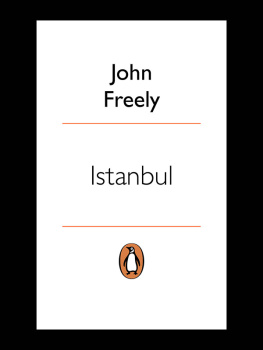
![Freely - Stamboul sketches: [encounters in old Istanbu]l](/uploads/posts/book/201354/thumbs/freely-stamboul-sketches-encounters-in-old.jpg)

